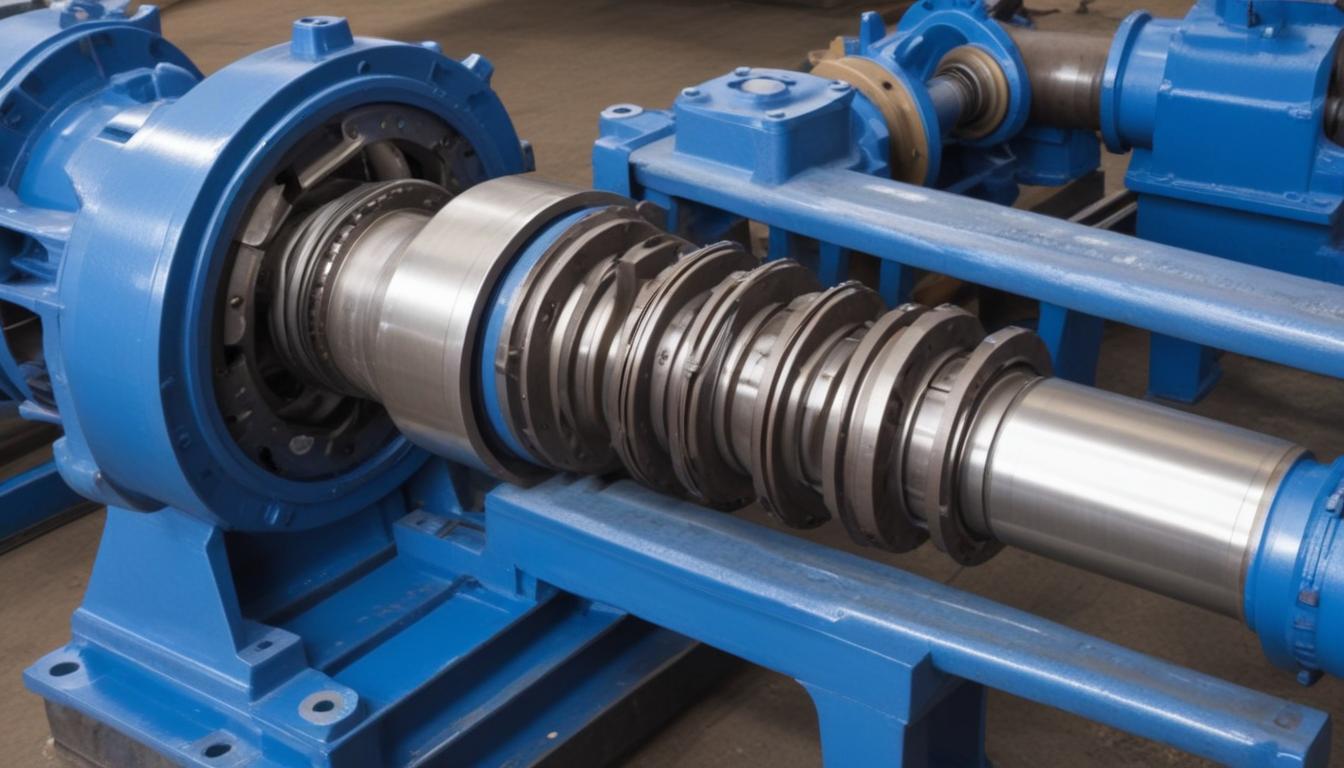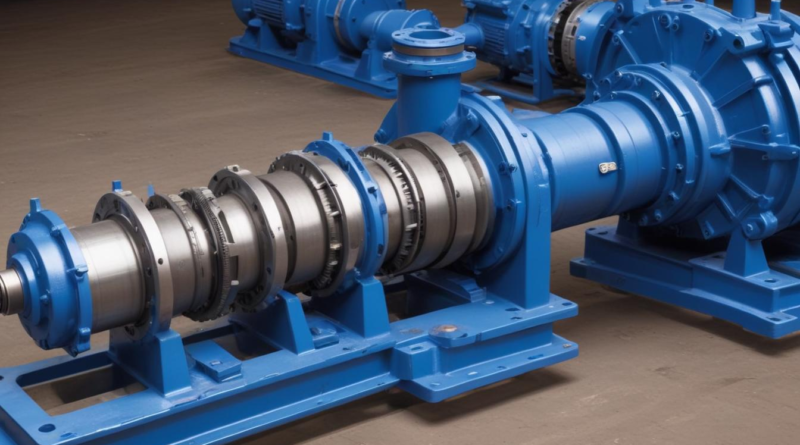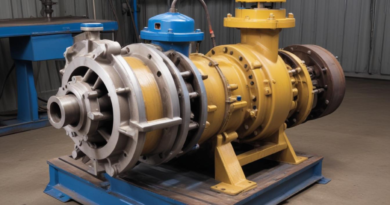Understanding the rotor and stator in progressive cavity pumps
The functionality of the rotor in progressive cavity pumps is crucial for their operation and efficiency. The rotor is typically a helical screw that rotates within the stator, enabling the movement of fluids through the pump. This unique configuration allows for a continuous and consistent flow of the liquid, making these pumps particularly effective for handling viscous materials.
The rotor’s design is integral to its performance. It plays a vital role in generating the necessary pressure to transport fluids, as the rotation creates a series of cavities that trap and move the fluid from the inlet to the outlet. The close tolerances between the rotor and stator enhance the efficiency of fluid transfer while minimizing the risk of leakage.
- Material Selection: The rotor is often made from materials such as stainless steel or other corrosion-resistant alloys to withstand harsh environments and fluid characteristics.
- Operating Principles: As the rotor turns, it displaces fluid towards the discharge, creating suction at the inlet and drawing in more fluid.
- Performance Factors: The speed of rotor rotation, along with the viscosity of the fluid, directly influences the flow rate and efficiency of the pump.
Understanding the rotor’s functionality in progressive cavity pumps is essential for engineers and pump users to optimize performance, ensure reliability, and effectively troubleshoot potential issues in application settings.
Exploring Stator Design
The design of the stator in progressive cavity pumps is pivotal to the overall functionality of the system. The stator complements the rotor’s operation by housing it and providing the necessary structure to facilitate efficient fluid movement. Typically, the stator is constructed in a helical shape, specifically designed to fit snugly against the rotor, thus maintaining minimal clearance to promote high-efficiency pump action.
The material selection for the stator is also critical, as it must withstand various operational challenges while maintaining high performance. Common materials used in stator fabrication include:
- Nitrile elastomers: Known for their excellent resistance to oils and high abrasion, nitrile is often used when dealing with viscous or chemically aggressive fluids.
- Eco-friendly elastomers: These materials are increasingly popular due to their environmentally friendly properties while still offering good wear resistance.
- Fluoroelastomers: Used for their outstanding thermal stability and chemical resistance, making them suitable for extreme conditions.
The stator’s geometry plays a critical role in the operational efficiency of progressive cavity pumps. The design typically includes a series of interconnected cavities, which work in concert with the rotor to ensure a smooth, continuous flow of liquid. As the rotor turns, it creates pressure differentials that draw fluid into the cavities formed between the rotor and the stator.
One key aspect concerning the stator is its wear characteristics. Over time, wear can occur due to the constant friction and shear stresses imposed during pump operation. Regular inspection and maintenance are necessary to address any wear issues before they lead to performance degradation. Factors influencing stator wear include:
- Fluid viscosity: High-viscosity fluids can increase the shear stress on the stator, accelerating wear.
- Pumping speed: Higher speeds can generate more friction, leading to increased wear rates.
- Solids content: Fluids containing solids can exacerbate wear and tear on the stator material.
Understanding how to effectively design and select stators for progressive cavity pumps is essential for engineers and pump users to ensure optimal performance, longevity, and reliability in various applications.
Comparative Analysis of Rotor and Stator Materials

In the analysis of rotor and stator materials within progressive cavity pumps, the materials significantly impact the pump’s performance, durability, and suitability for different applications. Understanding the comparative properties of these materials is essential for engineers and pump users aiming to optimize pump functionality and longevity.
Common Rotor Materials: The rotor is typically manufactured from materials that provide strength, resistance to wear, and chemical stability. The most frequently used materials include:
- Stainless Steel: Known for its corrosion resistance, stainless steel is often chosen for applications involving aggressive chemicals or high temperatures.
- Carbon Steel: A cost-effective choice for less abrasive applications, though it may require additional coatings to prevent corrosion.
- Special Alloys: In certain applications, specific alloys are utilized to enhance durability against highly corrosive substances.
Common Stator Materials: The stator is primarily designed to provide a durable and flexible housing for the rotor, with its material selection being vital to accommodate the operational environment. Common stator materials include:
- Nitrile (NBR): Popular for its excellent resistance to oil and heat, nitrile is used in many applications where reliability is crucial.
- EPDM: Chosen for its resilience against weathering and UV exposure, making it suitable for outdoor or high-temperature environments.
- Silicone and Fluoroelastomers: These materials are used where specialized chemical resistance is needed, especially in challenging operational conditions.
When comparing the materials for rotors and stators, several factors must be considered:
- Wear Resistance: The rotor typically experiences higher mechanical wear due to continuous motion and friction, while the stator may experience less direct wear but can degrade through chemical or thermal exposure.
- Compatibility with Pumped Fluids: The materials must be compatible with the fluids being pumped to avoid degradation and ensure efficiency, which is particularly critical in applications handling corrosive or abrasive fluids.
- Cost and Availability: The cost of materials can vary significantly. A balance must be struck between performance and economic considerations, as some advanced materials may offer superior performance but at a higher price.
Rigorously evaluating the materials used for both the rotor and stator is pivotal for ensuring the reliability and efficiency of progressive cavity pumps. By understanding the strengths and limitations of various material choices, engineers can make informed decisions that optimize pump performance and extend the operational lifespan of the system.
Common Issues and Troubleshooting
Progressive cavity pumps, while robust and efficient, can encounter a range of common issues that may affect their performance. Understanding these challenges is essential for effective troubleshooting and maintenance. Some prevalent problems include:
- Fluid Leakage: This issue often arises from wear between the rotor and stator. As the components wear, clearance increases, leading to fluid escaping from the pump. Regular inspection and timely replacement of worn components are critical to preventing leakage.
- Reduced Flow Rate: A noticeable drop in flow rate may indicate issues such as blockages in the pump, a decrease in rotor speed, or wear on the rotor and stator surfaces. An evaluation of the system should be conducted to diagnose and rectify the underlying cause.
- Unusual Noises: Grinding or chattering noises during operation can signal mechanical issues. These sounds may suggest improper alignment of the rotor and stator or bearing failure. Investigating these noises promptly can help prevent further damage.
To effectively troubleshoot these issues, a systematic approach should be employed:
- Visual Inspection: Regularly inspect the exterior and accessible components of the pump for signs of wear, corrosion, or physical damage.
- Performance Monitoring: Keep records of flow rates and operating pressures to identify any deviations from expected performance over time.
- Fluid Analysis: Conduct fluid analysis to check for contamination or degradation that can affect pump operation and lead to increased wear on the rotor and stator.
Addressing these common issues requires a good understanding of the rotor and stator dynamics in progressive cavity pumps. Replacement of worn components and regular maintenance schedules should be implemented to ensure the long-term reliability and efficiency of the pump. Proactive measures in monitoring conditions can ultimately mitigate the risk of severe operational problems and enhance the lifespan of the equipment.
Applications of Progressive Cavity Pumps

Progressive cavity pumps find extensive applications across various industries due to their ability to handle a wide range of viscosities and fluids, including those that are abrasive, corrosive, and shear-sensitive. Their unique design allows for the reliable movement of fluids in situations where traditional pumps may struggle. Below are some notable applications where progressive cavity pumps demonstrate significant advantages:
- Food and Beverage Industry: These pumps are ideal for transferring food products such as pastes, slurries, and viscous liquids. They ensure gentle handling of materials, thus maintaining product integrity and quality.
- Oil and Gas: In this sector, progressive cavity pumps are utilized for transporting crude oil, drilling mud, and various chemicals. Their ability to operate efficiently with high-viscosity fluids makes them essential for maintaining productivity in extraction and transport operations.
- Wastewater Treatment: Progressive cavity pumps are employed in sewage and waste management systems due to their capacity to handle solids-laden fluids. They facilitate the transport of sludge and other challenging effluents without clogging.
- Chemical Processing: These pumps are extensively used to move a variety of corrosive and non-corrosive fluids in chemical manufacturing processes. Their resistance to wear and chemical degradation enhances operational safety and efficiency.
- Pharmaceutical Industry: Used for transferring sensitive materials, progressive cavity pumps ensure minimal shear and consistent flow, crucial in maintaining the integrity of active pharmaceutical ingredients (APIs).
In addition to these industries, progressive cavity pumps can also be found in:
- Pulp and Paper: For transporting slurries and chemicals.
- Mining: In applications involving the transfer of slurry, concentrates, and other materials.
- Printing and Ink: To deliver inks and dyes with precision and control.
Understanding the diverse applications of progressive cavity pumps enables engineers and pump users to select the appropriate pump configuration and materials for specific operational needs. This knowledge is vital for optimizing performance, reducing downtime, and ensuring the effective handling of materials across multiple industries.




